 |
GENERAL ELECTRIC mod. 676 U.S.A. 1956 |
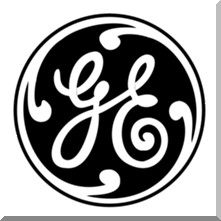 |
|
|
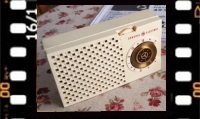 |
Description Restoration |
|||
|
Se la Regency TR1 fu indubbiamente il primo apparecchio radio tascabile a transistor a essere realizzato e prodotto negli Stati Uniti nel 1954, la General Electric 675 condivise con la Raytheon 8-TP-1 l'onore di essere la seconda radio portatile a essere commercializzata negli U.S.A. a partire dal 1955. La Raytheon 8-TP-1 era molto più voluminosa della Regency, era fatta a valigetta e impiegava otto transistor, la General Electric 675 invece di transistor ne utilizzava solo cinque e come dimensioni e portabilità poteva paragonarsi alla TR-1 riscuotendo subito interesse da parte del pubblico. La G.E. produsse la sua radio con il mobiletto in plastica di vari colori. La 675 era nera, la 676 era di colore avorio mentre la 677 e la 678 rispettivamente rossa e verde furono commercializzate a partire dal 1956. L'esemplare in mio possesso visibile nelle foto è stato prodotto nella settimana dal 9 al 15 luglio 1956 perché sul condensatore variabile è impressa la sigla 628, ovvero 28a settimana del 1956. Il circuito della 676 era una supereterodina che copriva la gamma delle Onde Medie (da 540 a 1600 kHz), utilizzava 5 transistor al germanio e nel modello in mio possesso anche un diodo al germanio: 2N136, 2N137, 2N135, 2N78, 2N44 e 1N64. La Media Frequenza risuonava a 455 kHz e l'antenna era avvolta su un nucleo di ferrite. Il primo transistor del circuito, un PNP con sigla 2N136, fungeva da amplificatore e oscillatore in Radio Frequenza, i due PNP seguenti (2N137 e 2N135) agivano rispettivamente come primo e secondo amplificatore a Frequenza Intermedia. Lo stadio audio era costituito dal transistor NPN preamplificatore di bassa frequenza 2N78 e dal PNP finale in classe A tipo 2N44, che tramite il trasformatore d'uscita forniva all'altoparlante 60 mW. 60 MW non sembrano molti, ma tenendo conto che l'amplificatore utilizzava un solo transistor al germanio erano sufficienti per permettere l'ascolto anche fuori casa. Il mobiletto della 676 era realizzato in plastica di color beige, la scala di sintonia con relativa manopola dorata era situata sul lato destro del pannello frontale mentre sulla parte alta del mobiletto c'era la manopola del volume con l'interruttore di accensione. L'altoparlante magnetodinamico aveva il diametro di 7 cm e l'impedenza di 16 Ohm, mentre in alto a sinistra nel coperchio posteriore era situata la presa per l'auricolare. Per l'alimentazione della radio era necessaria una batteria speciale che doveva fornire due tensioni: 9 e 13,5 V. La batteria poteva essere la Eveready 239, la Burgess XX9 o la RCA VS304. Con il polo positivo della batteria collegato a massa, la tensione negativa di - 4,5 V era prelevata tra i -13,5 e i -9 V e serviva alla corretta polarizzazione dell'emitter del transistor 2N137 nel primo stadio di Frequenza Intermedia. Un'altra peculiarità della 675 e compagne era il circuito stampato a doppia faccia, con piste di rame che collegavano i componenti su entrambe le facce del supporto isolante, tecnica davvero antesignana per l'epoca. Le dimensioni della radio erano: (LxAxP) 140 x 76 x 38 mm, e il peso con batteria installata era di 402 g. L'esemplare che sono riuscito a rintracciare era inoltre corredato della sua borsetta di cuoio completa di cinghia per il trasporto e dell'auricolare. Come si può evincere dalla pubblicità, il prezzo nel primo anno di vendita era di 49,95 $.  Questa radio portatile era stata prodotta e commercializzata negli Stati Uniti nei primi anni della Guerra Fredda perciò, come su molti altri ricevitori U.S.A. della stessa epoca, sulla manopola della sintonia riportava impressi due triangolini in corrispondenza delle frequenze dove avrebbero trasmesso le stazioni di emergenza del sistema di allarme nucleare CONELRAD. Per ulteriori informazioni seguire questo Link. © IK3HIA, 2024. |
|||||
|
|
|||||
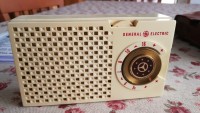 |
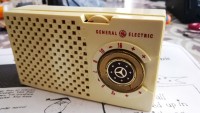 |
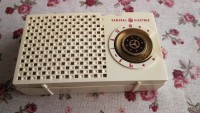 |
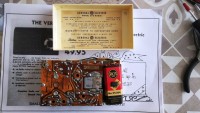 |
||
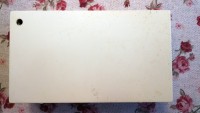 |
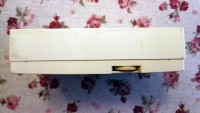 |
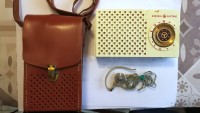 |
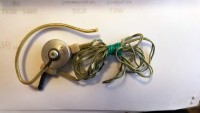 |
||
|
If the Regency TR1 was undoubtedly the first transistor pocket radio to be designed and produced in the United States in 1954, the General Electric 675 shared with the Raytheon 8-TP-1 the honor of being the second portable radio to be marketed in the USA starting from 1955. The Raytheon 8-TP-1 was much bulkier than the Regency, it was made like a briefcase and used eight transistors, the General Electric 675 instead of transistors used only five and in terms of size and portability it could be compared to the TR-1, immediately attracting interest from the of the public. The G.E. produced his radio with a plastic cabinet in various colors. The 675 color was black, the 676 was ivory while the 677 and 678 respectively red and green were marketed since 1956. The example in my possession visible in the photos was produced in the week from 9 to 15 July 1956 because on variable capacitor is imprinted the number 628, i.e. 28th week of 1956. The 676 circuit was a superheterodyne that covered the Medium Wave range (from 540 to 1600 kHz), used 5 germanium transistors and in the model in my possession also a germanium diode: 2N136, 2N137, 2N135, 2N78, 2N44 and 1N64 . The Medium Frequency resonated at 455 kHz and the antenna was wrapped around a ferrite core. The first transistor, a PNP with the code 2N136, acted as a Radio Frequency amplifier and oscillator, the following two PNPs (2N137 and 2N135) acted respectively as the first and second Intermediate Frequency amplifier. The audio stage consisted of the NPN transistor 2N78 as audio frequency preamplifier and the 2N44 class A final PNP, which supplied the speaker with 60 mW max via the output transformer. 60 mW obviously doesn't seem like a lot, but taking into account that the amplifier used only one germanium transistor they were enough to allow listening even outside. The cabinet was made of beige plastic, the dial scale with its golden knob was located on the right side of the front panel while on the upper part of the cabinet there was the volume knob with the power switch. The magnetodynamic speaker had a diameter of 2.75 inch and an impedance of 16 Ohm, while the socket for the earphone was located at the top left of the rear cover. To power the radio, a special battery was needed that provided two output voltages: 9 and 13.5 V. The battery could be the Eveready 239, the Burgess XX9 or the RCA VS304. With the positive pole of the battery connected to ground, the negative voltage of -4.5 V was taken between -13.5 and -9 V and was used for the correct biasing of the emitter of the 2N137 transistor in the first Intermediate Frequency stage. Another peculiarity of the 675 and its companions was the double-sided printed circuit, with copper tracks that connected the components on both faces of the insulating support, a really pioneering technique for the time. The dimensions of the radio were: (WxHxD ) 5.5 x 3 x 1.5 inch, and the weight with battery installed was 14.2 oz. My copy is accompanied by his nice leather handbag with carrying strap and the original earphone. As can be seen from the advertising, the price in the first year of sale was $49.95.  This portable radio was produced and marketed in the United States in the early years of the Cold War therefore, as with many other U.S. contemporary receivers, two small triangles were imprinted on the dial scale which marked the frequencies where the emergency stations of the CONELRAD nuclear warning system would transmit. For further information follow this Link. © IK3HIA, 2024. |
|||||
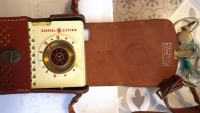 |
 |
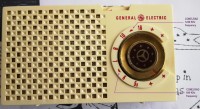 |
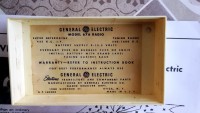 |
||
 |
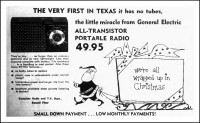 |
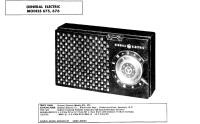 |
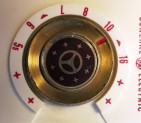 |
||
|
G.E.676 restoration page |
|||||
|
|
Return to: IK3HIA home page |
|
Return to: Transistor Radio |
|
Go to: Transistor diagrams |